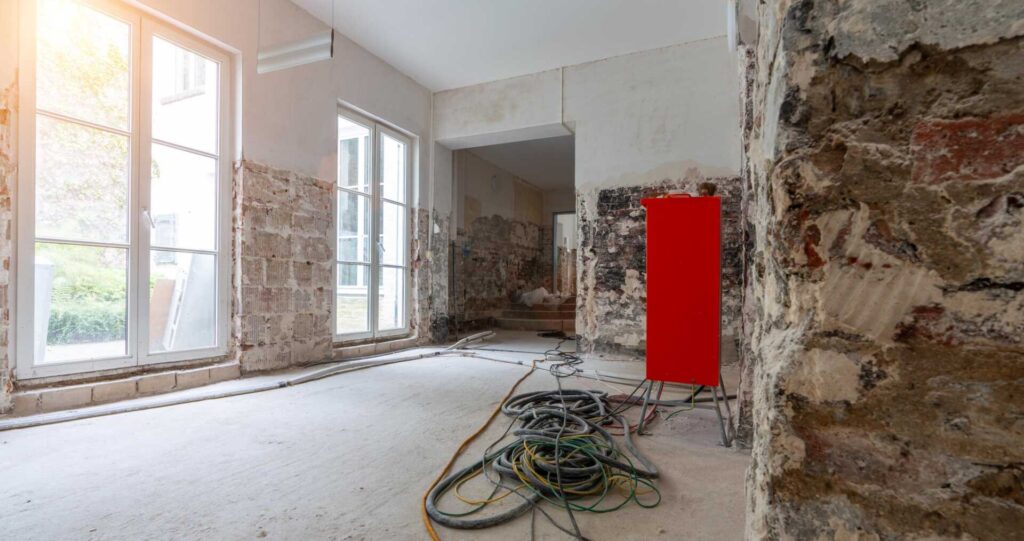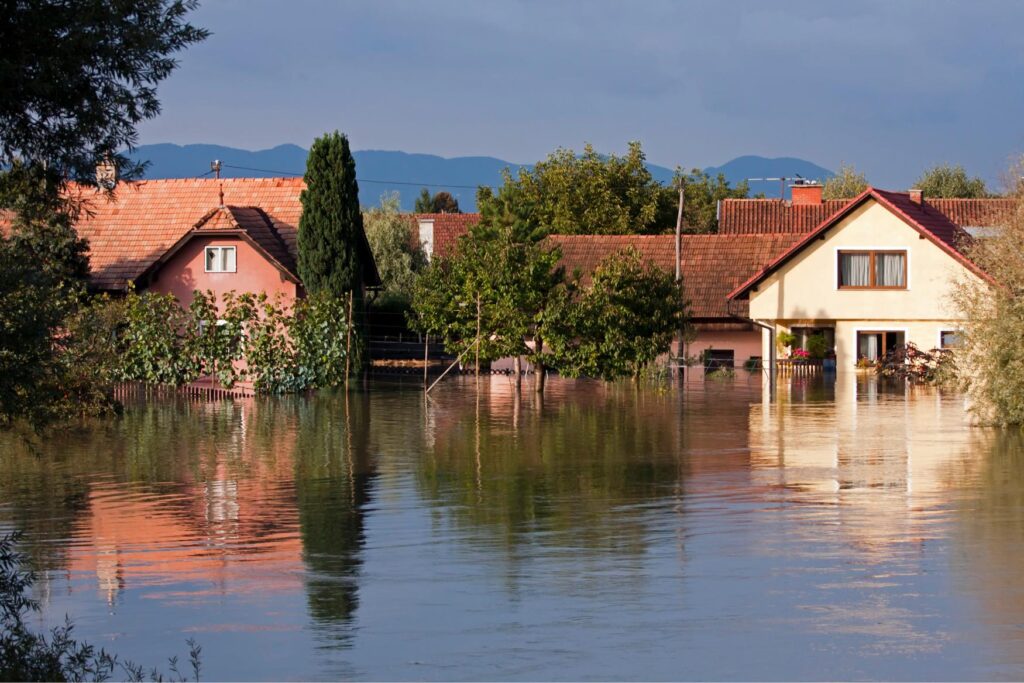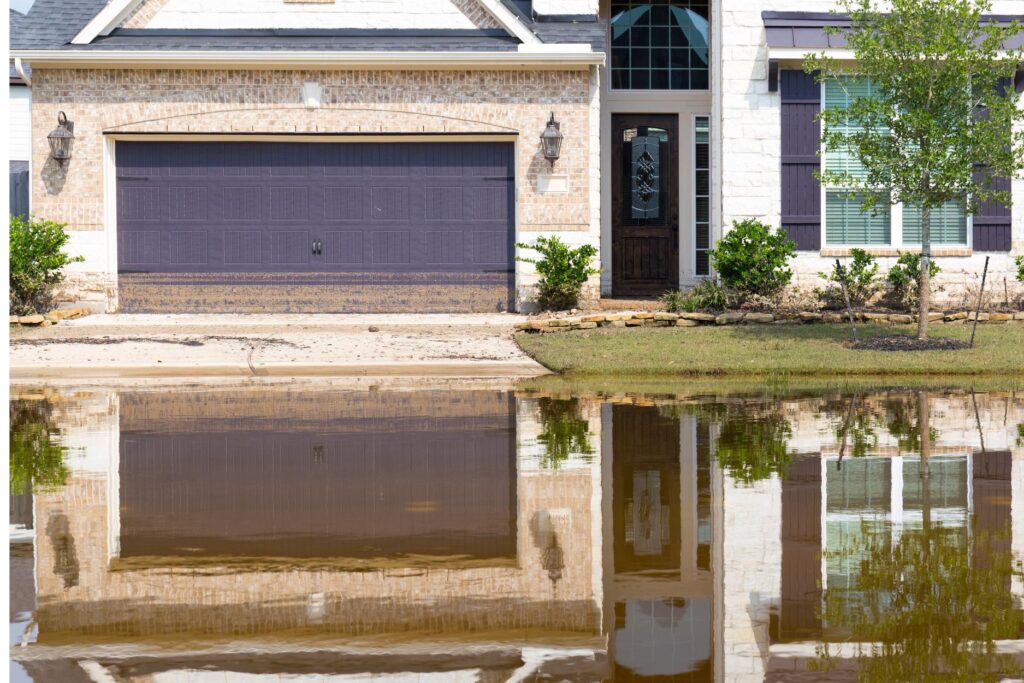Contents
When faced with mold growth post-water damage, you need to be proactive in addressing the issue. By following seven key strategies, you can effectively combat mold and protect your property. From inspecting for hidden sources of water intrusion to seeking professional assistance when needed, each step plays a crucial role in safeguarding your home. Stay tuned to discover actionable tips that will help you tackle mold growth head-on and ensure a healthy living environment for you and your loved ones.
Key Takeaways
- Thoroughly inspect the property for water intrusion sources.
- Remove wet materials promptly to prevent mold.
- Utilize dehumidifiers and fans for moisture control.
- Clean and disinfect surfaces post-water damage.
- Monitor and prevent lingering moisture for mold prevention.
Inspect for Water Intrusion
Begin by thoroughly examining all areas of your property for signs of water intrusion, such as damp spots, discoloration, or musty odors, to identify potential sources of moisture that could lead to mold growth. Mold prevention starts with early detection of water damage.
Check for leaking pipes, roof leaks, or condensation buildup. These could be breeding grounds for mold if left unchecked. Remember, mold thrives in damp, humid environments, so it’s crucial to address any water issues promptly.
Inspect your walls, ceilings, floors, and corners for any visible water damage. Look for peeling paint, bubbling wallpaper, or sagging drywall, as these could indicate underlying water problems. Don’t forget to check hidden areas like crawl spaces, attics, and basements, where moisture buildup is common. Use a flashlight to spot any dark or wet areas that might be missed otherwise.
If you discover any signs of water intrusion, take immediate action to repair the source of the problem. Fix leaking pipes, repair roof damage, or improve ventilation in humid areas.
Once the water issue is resolved, thoroughly dry the affected areas within 24-48 hours to prevent mold growth. Use dehumidifiers, fans, or open windows to promote air circulation and aid in the drying process. Remember, swift and effective water damage detection is key to preventing mold infestations.
Dry Affected Areas Thoroughly
To prevent mold growth efficiently, you must focus on quick moisture removal from affected areas.
Implement proper ventilation techniques to ensure air circulation and aid in the drying process.
Additionally, utilize dehumidifiers effectively to maintain optimal humidity levels and speed up the drying of water-damaged spaces.
Quick Moisture Removal
Thoroughly drying the areas affected by water damage is crucial to prevent mold growth and further structural damage. Quick moisture removal is key in this process to ensure a successful restoration. Here are some strategies to help you dry the affected areas effectively:
| Quick Moisture Removal Tips | Description |
|---|---|
| Use dehumidifiers | Dehumidifiers help extract moisture from the air, aiding in drying out the space. |
| Increase ventilation | Proper airflow is essential to speed up the drying process and prevent stagnant moisture. |
| Utilize fans | Fans can help circulate air and promote evaporation, expediting the drying of wet surfaces. |
| Remove wet materials | Eliminate any water-damaged items or materials to prevent further moisture retention. |
| Monitor humidity levels | Regularly check the humidity levels to ensure they are decreasing, indicating effective drying. |
Proper Ventilation Techniques
For optimal drying of the affected areas post-water damage, employing proper ventilation techniques is essential to ensure thorough moisture removal. Proper airflow plays a crucial role in expediting the drying process and preventing mold growth.
Ventilation benefits the drying process by facilitating the evaporation of excess moisture from surfaces and the air, reducing humidity levels that promote mold growth. To enhance ventilation, open windows, and doors to allow fresh air to circulate throughout the space. Utilizing fans strategically can improve airflow and help dry out damp areas more effectively.
Additionally, positioning fans near wet surfaces like carpets or walls can aid in accelerating the evaporation process. Implementing proper drying techniques, such as using air movers to circulate air and dehumidifiers to extract moisture, can further enhance ventilation efforts.
Use Dehumidifiers Effectively
Properly drying affected areas after water damage requires effectively utilizing dehumidifiers to extract excess moisture and prevent mold growth.
When placing dehumidifiers, position them centrally in the affected area for optimal efficiency. Ensure the space around the dehumidifier is clear to allow for proper air circulation.
Regular maintenance is crucial for energy efficiency; clean the coils and filters according to the manufacturer’s recommendations. Set the dehumidifier to maintain a relative humidity level between 30% and 50% for the best results in preventing mold growth.
Optimal settings may vary depending on the extent of water damage and the size of the affected area, so monitor the humidity levels regularly.
Remove Wet Materials Promptly
Remove water-damaged materials promptly to prevent the growth of mold in your home. Acting swiftly is crucial in mold prevention. Mold spores can start developing within 24 to 48 hours after water damage, making it imperative to remove wet materials immediately.
Start by wearing protective gear such as gloves, masks, and goggles before handling any water-damaged items. Sort through the affected materials, discarding those that can’t be salvaged. Porous items like carpets, insulation, and drywall that have absorbed water are breeding grounds for mold and should be disposed of properly.
For salvageable items, dry them out as soon as possible. Use towels, mops, or wet/dry vacuums to remove excess water. Move furniture to a dry area and open windows to increase ventilation. Consider using dehumidifiers to reduce moisture levels in the air, aiding in the drying process.
Remember to clean and disinfect the area thoroughly after removing wet materials. Use a solution of water and detergent to scrub surfaces that may have come into contact with the water. This step is crucial in preventing mold growth and ensuring a healthy environment in your home.
Use Dehumidifiers and Fans
To combat mold growth post-water damage, utilizing dehumidifiers and fans is crucial.
Dehumidifiers help regulate moisture levels in the air, reducing the dampness that fosters mold growth.
Fans aid in promoting air circulation, which aids in drying out affected areas more quickly and effectively.
Moisture Control Methods
Utilize dehumidifiers and fans as effective tools in controlling moisture levels post-water damage to prevent mold growth.
When it comes to moisture control methods, here are four key strategies to consider:
Humidity Monitoring: Invest in a quality hygrometer to keep track of humidity levels in the affected area. Aim to maintain indoor humidity levels below 60% to inhibit mold growth effectively.
Dehumidifiers: Use a dehumidifier to extract excess moisture from the air, especially in enclosed spaces like basements or attics. Ensure the dehumidifier is appropriately sized for the area to maximize efficiency.
Fans: Circulate air using fans to promote drying and prevent stagnant, humid conditions in which mold thrives. Position fans strategically to enhance airflow and expedite the drying process.
Prevention Techniques: Implement preventive measures such as fixing leaks promptly, improving ventilation, and using waterproof sealants to minimize the risk of future water damage incidents. Consistent maintenance is key to long-term mold prevention.
Air Circulation Importance
Maintain optimal air circulation through the strategic placement of dehumidifiers and fans to facilitate the drying process and deter mold growth following water damage. Proper air circulation is crucial for enhancing air quality and preventing mold proliferation in water-damaged spaces.
Dehumidifiers extract excess moisture from the air, reducing humidity levels and creating an unfriendly environment for mold to thrive. By strategically positioning dehumidifiers in areas prone to dampness, you can effectively control moisture and inhibit mold growth.
Additionally, utilizing fans helps to circulate air, expediting the evaporation of water and aiding in the drying process. This active airflow not only accelerates drying but also discourages mold formation by reducing stagnant, humid conditions.
To optimize air quality and mold prevention post-water damage, ensure that dehumidifiers and fans are strategically placed throughout the affected area. By implementing these measures, you can effectively combat mold growth and promote a healthier indoor environment.
Clean and Disinfect Surfaces
Ensure thorough cleaning and disinfection of all surfaces affected by water damage to effectively combat mold growth. Mold spores can quickly colonize damp surfaces, posing health risks and causing structural damage.
Here are some steps to help you clean and disinfect surfaces properly:
Choose the Right Disinfecting Techniques: Opt for EPA-approved disinfectants to ensure effectiveness against mold spores. Follow manufacturer instructions for proper dilution and application methods.
Utilize Effective Surface Cleaning Methods: Use a combination of detergent and water to scrub surfaces. For non-porous materials, consider using a mixture of bleach and water (1 cup of bleach to 1 gallon of water) for disinfection.
Focus on Hidden Areas: Don’t forget to clean and disinfect hard-to-reach spots like behind baseboards, under carpets, and inside wall cavities. Mold can thrive in these concealed areas.
Dry Surfaces Thoroughly: After cleaning and disinfecting, ensure all surfaces are completely dry. Moisture promotes mold growth, so use fans, dehumidifiers, or open windows to aid in the drying process.
Monitor for Lingering Moisture
Regularly check for any lingering moisture in the affected areas to prevent mold growth post-water damage. Mold prevention hinges on thorough dampness detection. Even after the visible water is removed, moisture can persist in hidden nooks and crannies, providing an ideal breeding ground for mold spores. To effectively monitor for lingering moisture, consider utilizing a combination of tools and techniques.
One efficient method for dampness detection is using a moisture meter. These devices can accurately measure the moisture content in various materials, such as walls, floors, and ceilings. By regularly scanning the affected areas with a moisture meter, you can pinpoint any areas that still retain moisture, allowing you to take targeted action to dry them out completely.
Another useful tool for monitoring moisture is a dehumidifier. Dehumidifiers work by extracting excess moisture from the air, aiding in the drying process of water-damaged spaces. Running a dehumidifier in the affected areas can help prevent mold growth by maintaining optimal humidity levels.
In addition to using tools, employing visual inspections can also aid in detecting lingering moisture. Look out for signs such as water stains, damp odors, or condensation on windows, as these can indicate areas where moisture is still present. By combining both technology and visual checks, you can effectively monitor for lingering moisture and mitigate the risk of mold growth post-water damage.
Seek Professional Help Early
To effectively address mold growth post-water damage, prompt professional assistance should be sought early in the restoration process. Early intervention plays a critical role in preventing mold proliferation and minimizing the extent of damage. Here are four reasons why seeking professional help early is essential:
Professional Assessment: A trained professional can conduct a thorough assessment of the water damage and potential mold growth risks. Their expertise allows for early detection of mold before it becomes a widespread issue.
Specialized Equipment: Professionals have access to specialized equipment, such as moisture meters and infrared cameras, to detect hidden moisture pockets that could lead to mold growth. This advanced technology aids in preventing mold before it takes hold.
Effective Remediation: Early intervention by professionals ensures that mold remediation is conducted swiftly and effectively. Their knowledge of industry best practices ensures thorough removal of mold, and reducing the risk of future growth.
Prevention Strategies: Professionals can recommend prevention strategies to mitigate future mold risks. Their guidance on improving ventilation, reducing humidity levels, and addressing water leaks can help prevent mold growth in the long term.
Wrap-Up
By following these seven strategies for combatting mold growth post-water damage, you can effectively prevent mold infestations and ensure a safe environment for your property. Remember to inspect, dry, remove, use dehumidifiers, clean, monitor, and seek professional help when needed.
Taking proactive measures and addressing water damage promptly are crucial in maintaining a mold-free space. Stay vigilant, act swiftly, and protect your property from the harmful effects of mold.




